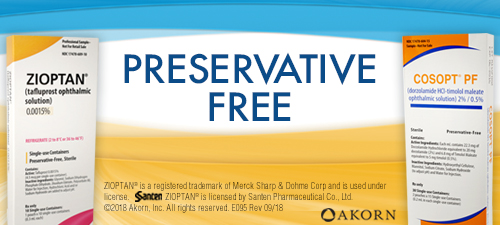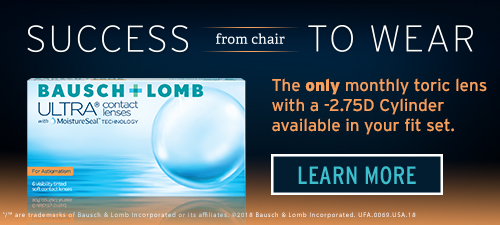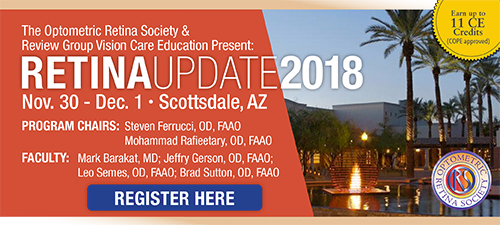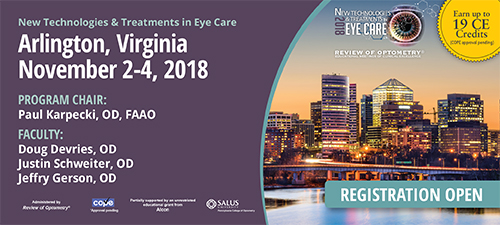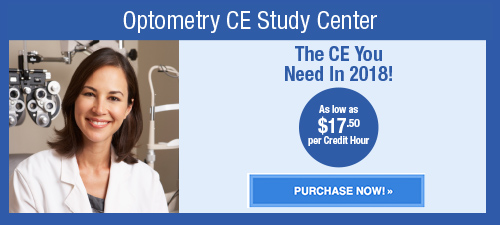
A
weekly e-journal by Art Epstein, OD, FAAO
Off the Cuff: Originalism and Clinical Insight
First, this is not about politics. It is about perspective, learning and epiphany. As many of you know, my primary clinical interest is the ocular surface. Beyond that, I have a lot of other interests. From fast cars to guitars to high tech to ham radio. Oddly, I’m also interested in constitutional law. Go figure.
|
|||||
 |
||
| Corneal Limbal Stem Cell Deficiency in Children with Stevens-Johnson Syndrome | ||||
These researchers determined the incidence of corneal limbal stem cell deficiency (LSCD) as chronic ocular sequelae in children with Stevens-Johnson syndrome (SJS)/toxic epidermal necrolysis (TEN) and analyzed the factors associated with LSCD development. Medical records were reviewed of pediatric patients who had been admitted to Seoul National University Hospital with SJS/TEN and diagnosed as having acute ocular involvement. For each record, the following data were collected: demographic information, underlying diseases, causative agents, acute systemic and ocular manifestations, systemic and ocular treatments, chronic ocular complications including LSCD and visual acuities.
Out of 19 children with SJS/TEN, LSCD developed in six (32%) at the mean 12.3 months ± 21.3 months after the onset of SJS/TEN (the median 3.5 months). The severity of acute systemic involvement including elevation of liver enzymes and serum CRP was significantly correlated with the development of LSCD and chronic ocular complications. The presence of corneal epithelial defect necessitating the use of therapeutic contact lenses in the acute phase was also associated significantly with LSCD development. Combined penetrating keratoplasty and limbal allograft were performed in three of six LSCD patients, and grafts failed in two (67%) due to infection. At the last follow-up, visual acuities were significantly poorer in LSCD patients, compared with those without LSCD. Corneal LSCD occurred in 32% of pediatric patients with SJS/TEN, leading to poor visual outcome. The severity of acute systemic involvement was significantly associated with the development of LSCD and chronic ocular complications. |
||||
SOURCE: Choi SH, Kim MK, Oh JY. Corneal limbal stem cell deficiency in children with Stevens-Johnson syndrome. Am J Ophthalmol. 2018; Oct 19. [Epub ahead of print]. |
||||
|
|||
| An Approach for Simulating the Fitting of Rigid Gas-permeable Contact Lenses Using 3D Printing Technology | ||||
A hemispherical or parabolic 3D model was created using 3D Builder or Tinkercad software to introduce a new approach to simulate the fitting process of rigid gas-permeable (RGP) contact lenses using 3D printing technology. The horizontal and vertical diameters, and the hemispherical or ellipsoid height were adjusted to simulate different morphologies of the corneal anterior surface. After exporting the file in stereo lithography (STL) format, a solid model was printed using a 3D printer and was used to simulate RGP contact lens fitting.
Limited by the precision of the entry-level 3D printer that was used in this study, the printouts of the corneal models were crude, but the models were tested for their ability to simulate common corneal morphologies with no corneal astigmatism and different axial corneal astigmatism. Compared with some built-in simulation programs for corneal topography, the solid models generated by 3D printing could well simulate the positioning of the lens under the influence of gravity and the eyelid, as well as lens eccentricity or the bubbles under lenses caused by an improper wearing method. Researchers concluded that 3D printing technology could be well-applied in the simulation of RGP contact lens fitting, which might become a new teaching method in optometry. |
||||
SOURCE: Zhao F, Wang J, Wang L, et al. An approach for simulating the fitting of rigid gas-permeable contact lenses using 3D printing technology. Cont Lens Anterior Eye. 2018; Oct 15. [Epub ahead of print]. |
||||
 |
||
| Prevalence of Normal Tension Glaucoma in The Chinese Population: a Systematic Review and Meta-Analysis | ||||
Investigators looked at the prevalence of normal tension glaucoma (NTG) in the Chinese population through systematic review and meta-analysis. All Chinese population-based studies that reported the prevalence of NTG were identified. Investigators searched in PubMed and Chinese databases including Wanfang, CNKI (China National Knowledge Infrastructure) and VIP for studies published before Dec. 31, 2017. Random effects meta-analysis was conducted to estimate the pooled prevalence of NTG.
Twelve studies were included in this review and meta-analysis, including nine population-based studies and three studies from glaucoma clinics and managed-care networks. The nine population-based studies included a total of 30,892 subjects, with 498 primary open-angle glaucoma (POAG) patients and 354 NTG patients. The prevalence of estimated NTG ranged from 0.36% to 1.98%, and the percentage of NTG among POAG ranged from 51.43% to 83.58%. In the glaucoma clinic and managed-care network studies, NTG prevalence was much lower. The overall pooled proportion of NTG among POAG cases in the Chinese population was 70.0%, (95% CI: 62.0 to 77.0%). The overall pooled prevalence of POAG and NTG was 2.0% (95% CI: 1.0 to 2.0%) and 1.0% (95%CI: 1.0 to 1.0%), respectively. For the meta-regression of the NTG/POAG proportion, investigators found that age, gender, intraocular pressure (IOP) and Chinese-based vs. not-Chinese-based studies were not significantly associated with NTG/POAG prevalence, although the proportional prevalence decreased with increasing age category. Investigators determined that NTG was very common among POAG subjects in the Chinese population, and suggested that the findings could help guide future glaucoma studies and public health guidelines in the Chinese population. |
||||
SOURCE: Zhao J, Solano MM, Oldenburg CE, et al. Prevalence of normal tension glaucoma in the Chinese population: A systematic review and meta-analysis. Am J Ophthalmol. 2018; Oct 20. [Epub ahead of print]. |
||||
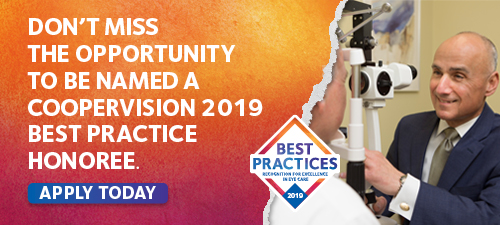 |
||
| News & Notes | |||||||||||||||||||||||||||||
Researchers Develop Noninvasive, Preservative-free Alternative to Eye Drops
|
|||||||||||||||||||||||||||||
| Academy Announces Career Development Awardee, Departure of Executive Director The American Academy of Optometry named Alexandra Benavente-Perez, MCOptom, PhD, FAAO, as the 2019 Academy Career Development Award recipient. The Academy will provide a maximum of $50,000 in direct costs per year for up to two years, potentially renewable once. The State University of New York will provide matching funds up to $50,000 per year for each year of funding. The funding will help support Benavente-Perez’ research on developing a novel experimental model of progressive myopia to study early retinal changes associated with high myopia. Read more. The Academy also announced that its long-serving executive director, Lois Schoenbrun, CAE, FAAO, will step down from her position in April 2019. Schoenbrun has been executive director of the Academy and the American Academy of Optometry Foundation since 1996. The organization is initiating a search to identify a new leader. Read more. |
|||||||||||||||||||||||||||||
| J&J Vision Introduces MyAcuvue Subscription Program Johnson & Johnson Vision launched its MyAcuvue Subscription Program to provide contact lens wearers greater access and convenience when purchasing an annual supply of Acuvue Brand contact lenses through their eye care professionals. Following a comprehensive eye exam and contact lens fitting, lens wearers can use MyAcuvue Rewards or spread out the cost into affordable payments with MyAcuvue Subscription to purchase an annual supply of lenses while in the doctor's office. Orders through the subscription program are placed through the eye care professional's practice and shipped directly from Johnson & Johnson Vision Care to the contact lens wearer. The program was developed with input from eye care professionals and office staff, and has no fees to the eye care practice to participate. Shipping is free, and the program will enable contact lens wearers to use their full insurance benefit. Read more. |
|||||||||||||||||||||||||||||
|
|||||||||||||||||||||||||||||
|
Optometric Physician™ (OP) newsletter is owned and published by Dr. Arthur Epstein. It is distributed by the Review Group, a Division of Jobson Medical Information LLC (JMI), 11 Campus Boulevard, Newtown Square, PA 19073. HOW TO ADVERTISE |


